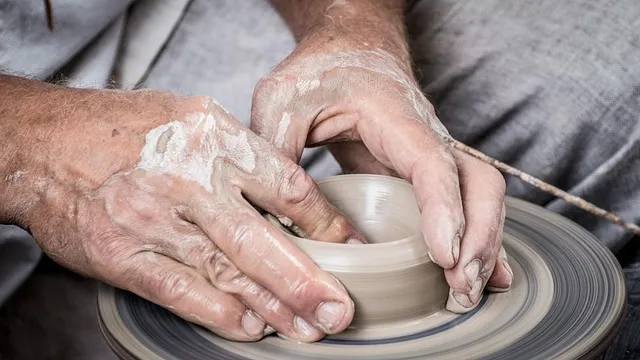Non-surgical body sculpting uses advanced technologies like HIFU, radiofrequency, and laser to destroy fat cells without incisions or recovery time, offering safer alternatives to traditional surgery for achieving a slimmer, more toned physique. These methods, including Emsculpt and CoolSculpting, are popular for targeting stubborn fat deposits and have minimal side effects, but success rates vary, necessitating qualified professionals. Choosing the right clinic with a proven track record, certified staff, and personalized consultations is crucial for safe and effective results.
Discover the future of body contouring with non-invasive body fat reduction techniques. This comprehensive guide explores non-surgical body sculpting, demystifying how it works and why it’s gaining popularity. From understanding the science behind it to uncovering its benefits and common techniques, we’ll navigate you through the process. Learn about safety concerns and find expert advice on choosing the right clinic for your transformation. Embrace a healthier, more confident you with non-surgical body sculpting.
Understanding Non-Invasive Body Fat Reduction: A Comprehensive Overview

Non-invasive body fat reduction, also known as non-surgical body sculpting, has emerged as a popular and effective method for achieving a slimmer, more toned physique. Unlike traditional surgical procedures, these non-invasive techniques offer a safer, more comfortable alternative for those seeking to reduce stubborn fat deposits without incisions or extensive recovery periods. The key lies in utilizing advanced technologies that target and break down fat cells, stimulating the body’s natural metabolic processes.
This comprehensive approach involves various methods such as high-intensity focused ultrasound (HIFU), radiofrequency energy, and targeted laser treatments. Each technique has its unique advantages, precisely heating and targeting specific fat areas to destroy fat cells while minimizing damage to surrounding tissue. With non-surgical body sculpting, patients can expect visible results over time, leading to improved body contouring and enhanced overall appearance without the risks associated with surgery.
How Does Non-Surgical Body Sculpting Work?

Non-Surgical Body Sculpting utilizes advanced technologies to target and reduce fat cells in specific areas without any incisions or recovery time. This innovative procedure involves the use of concentrated energy waves that penetrate the skin, heating up the fat cells and causing them to break down. As a result, these damaged fat cells are naturally eliminated from the body through its metabolic processes.
The process is often non-disruptive, safe, and effective for people looking to shape their bodies without surgery. It’s particularly popular among individuals who have stubborn fat deposits in certain areas, such as the abdomen, thighs, or arms. By focusing on these problem zones, Non-Surgical Body Sculpting offers a convenient and targeted approach to achieving a slimmer, more contoured physique.
Benefits and Advantages of Choosing Non-Invasive Methods

Non-invasive body fat reduction methods, including non-surgical body sculpting, offer a multitude of benefits and advantages over traditional surgical procedures. One of the most significant advantages is minimal to no recovery time. Unlike surgery, which often involves incisions, scars, and extended periods of rest, non-invasive treatments can be performed in a quick, outpatient setting with little to no downtime. This allows individuals to resume their regular activities almost immediately, making it an attractive option for those who want to achieve fat reduction without disrupting their daily lives.
Additionally, non-surgical body sculpting techniques are generally safer and more comfortable. They use advanced technologies like laser, radiofrequency, or high-intensity focused ultrasound (HIFU) to target and destroy fat cells without damaging surrounding tissues. These methods can effectively reduce stubborn fat deposits in problem areas such as the abdomen, hips, thighs, and arms, leading to a more sculpted and toned appearance. Moreover, they are suitable for a wide range of individuals, including those who may not be eligible for surgery due to health conditions or lifestyle factors, making non-invasive body fat reduction a versatile and appealing choice.
Common Techniques in Non-Invasive Body Fat Reduction

Non-invasive body fat reduction has revolutionized the way we approach weight management, offering safer and more comfortable alternatives to traditional surgical procedures. At the forefront of this movement is non-surgical body sculpting, a technique that targets specific areas of fat accumulation without incisions or extensive recovery periods. One of the most popular methods involves using targeted radiofrequency energy to heat and destroy fat cells, leading to their elimination from the body through natural processes. This technology, often incorporated into devices like Emsculpt or CoolSculpting, allows for significant fat reduction in treatment areas over a relatively short period.
Another common technique is high-intensity focused ultrasound (HIFU), which non-invasively breaks down fat cells by targeting them with precise sound waves. This method stimulates collagen production, improving skin tightening and tone alongside fat loss. Laser-based systems also gain traction for their ability to reduce fat and stimulate lymphatic drainage, promoting overall body contouring. These non-invasive approaches cater to individuals seeking gradual, effective results without the risks and downtime associated with surgical interventions, making them increasingly popular choices in aesthetics and wellness industries.
Safety and Efficacy Concerns: What You Need to Know

When it comes to non-invasive body fat reduction methods, such as non-surgical body sculpting, safety and efficacy are paramount. Many procedures promise dramatic results, but it’s crucial to understand the potential risks and side effects before undergoing any treatment. Unlike surgical options, non-surgical techniques aim to reduce fat cells without incisions or extensive recovery periods. However, this doesn’t mean they’re risk-free. Common concerns include temporary redness, swelling, discomfort, and in rare cases, more severe reactions. The effectiveness of these procedures also varies; some methods may deliver promising initial results, but long-term maintenance requires consistent lifestyle changes to prevent weight rebound.
It’s essential to choose a reputable clinic with qualified professionals who can provide detailed information about the procedure. Look for clinical studies and patient testimonials to gauge the success rates. Additionally, understanding the underlying technology and how it targets fat cells is key to evaluating its potential. Always discuss your medical history and any concerns with your practitioner to ensure the best and safest outcomes.
Finding the Right Clinic: Tips for Effective Non-Surgical Body Sculpting

When considering non-invasive body fat reduction treatments, choosing the right clinic is paramount for achieving safe and effective results. Start by researching clinics that specialize in non-surgical body sculpting and have a proven track record of success. Check their certifications, staff qualifications, and the types of technologies they employ—reputable facilities will be transparent about these details. Look for reviews from previous clients to gauge their experiences and the clinic’s overall reputation.
Ensure the clinic provides personalized consultations where your concerns are addressed and tailored solutions offered. A good clinic should offer a range of options, from laser treatments to radiofrequency technologies, allowing you to choose what best suits your needs and lifestyle. Remember, safety and comfort during the procedure are crucial, so verify their sterilization protocols and ask about any potential side effects or downtime.
